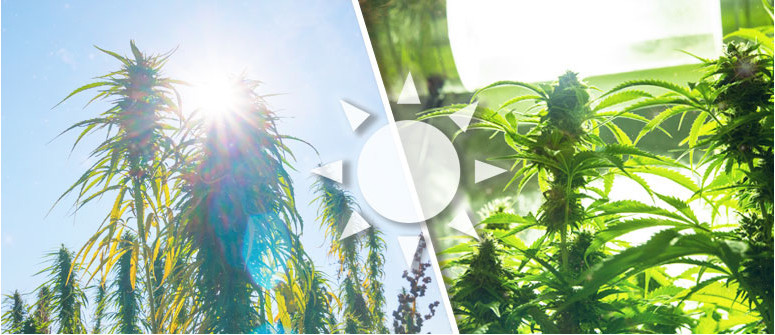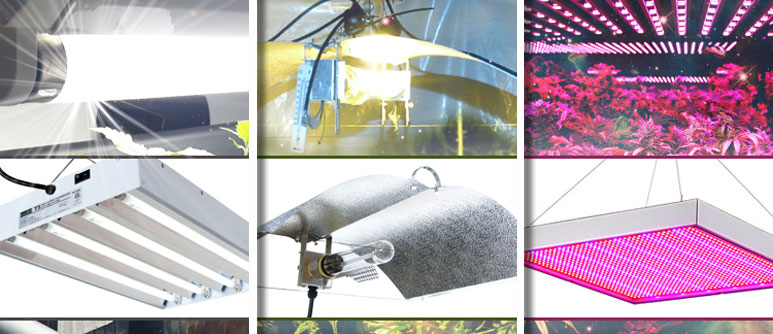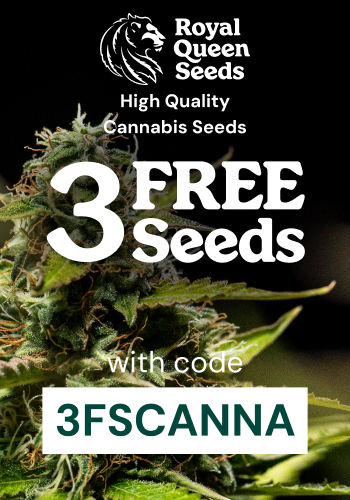The importance of light for growing cannabis

Light is the key to photosynthesis, a process which cannabis (and most plants) use to grow and develop healthy root systems and foliage. And big, fat buds...
Without the sun, there would be no life on earth. Plants thrive on sunlight and need it to fuel their growth and dictate their life cycle. And cannabis is no different.
Light is the key to photosynthesis, a process which cannabis (and most plants) use to grow and develop healthy root systems and foliage. And big, fat buds...
Photosynthesis involves 3 key components: light energy, absorbed by the plant’s leaves; water, absorbed via the plant’s roots; and carbon dioxide, absorbed from the air. Plants use the energy they absorb to essentially metabolize water and carbon dioxide, which they then use to grow.
Without light, plants cannot photosynthesize and will eventually die. Hence, it’s vital your plants receive plenty of light throughout the day so they can grow and eventually produce flowers.
Besides photosynthesis, light is also key in keeping plants in their vegetative growth phase and/or forcing them to flower when they (or you, the grower) are ready. Cannabis is a photoperiodic plant, and therefore, will flower once it receives 12 hours of uninterrupted light and 12 hours of total darkness. At this point, plants automatically “think” they are approaching the end of summer, which is when they naturally flower.
THE LIGHT SPECTRUM
To better understand how cannabis plants use light, it helps to understand the light spectrum.
There are essentially 7 kinds of light that make up the visible spectrum; violet, indigo, blue, green, yellow, orange, and red. These types of light usually sit within a wavelength of 380nm to about 750nm. Light between 280 and 315nm is known as UVC and, apart from causing sunburn, is also rumored to increase THC levels in cannabis plants.
Rates of photosynthesis are highest in red light, followed by blue light, and ultimately green light. Ideally, you’ll want to use different kinds of light during the vegetative and flowering stages of the cannabis life cycle:
• Vegetative phase: For vegetative growth, it’s best to use blue light (which usually sits around 400–500nm). Blue light will help your plants develop plenty of healthy leaves and thick, strong stems. Using stronger lights this early in the game will result in your plants stretching out and becoming hard to manage.
• Flowering phase: During the flowering phase, it's usually recommended to use red light (usually between 620–780nm). These lights will help your plants develop big buds and best imitates the natural angle of sunlight during late summer/early autumn.
DIFFERENT KINDS OF GROW LIGHTS

If you’re planning an indoor grow, chances are you’ve noticed that there’s a huge variety of growing equipment available to you. Below is a shortlist of some of the most common types of grow lights used by cannabis cultivators:
• Fluorescent lights: Fluorescent lights have a lower wattage than most other grow lights. They are generally designed to be used to grow plants that require lower light intensities than cannabis. There are two main kinds of fluorescent lights you can use to grow; compact fluorescent lights or CFLs (small, “twisted” looking lamps), and T5s (long cylindrical lamps, usually available in a panel).
Fluorescent lights are great for growers on a tight budget or those working in tight spaces, as they are easy to install and usually don’t take up as much room as other types of lights. Unfortunately, fluorescent lights won't really do the job once your plants flower, although they can be useful for the seedling and veg phases.
• HID lights: High-intensity discharge (HID) lights are another popular option for cannabis growers. They are powered by large bulbs which usually come in a variety of different shapes and patterns. While they produce plenty of great light and can produce excellent results, they are known to get very hot.
Hence, most growers using HID lights will also use exhaust systems to extract some of the heat from their grow space. Some common types of HID lights include high-pressure sodium (HPS) and ceramic metal halides (or CMH).
• LED lights: LED grow lights are much more powerful than fluorescent or HID lights. However, they are also (usually) much more expensive. LED lights are known to run much cooler than HIDs, and most professional LED grow lights will come with some kind of built-in cooling system.
They are often very easy to set up and put your plants at a far lower risk of being burnt. LEDs are also very penetrative, meaning they don’t need to be moved as often as HID or fluorescent lights, which will save you some physical labor.
THE RIGHT AMOUNT OF LIGHT FOR YOUR GROW SPACE
When cannabis plants finish their seedling stage and enter the vegetative stage they need at least 250 watts/m² of light to grow properly. For bigger, faster growth, you’ll ideally want to exceed this amount and provide roughly 400-600 watts per m². If you want to take it to the max you can consider to grow with 1000 watts grow lights per square meter.
When growing marijuana indoors with these kind of lamps you have to watch out for too high temperatures. These lamps create a lot of heat, especcially the 600W and 1000W lights can turn your grow room into a sauna.
.jpg)


.jpg)
